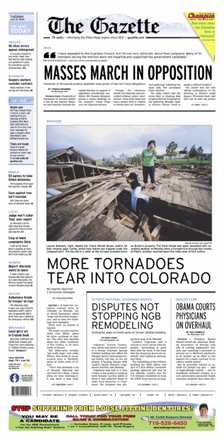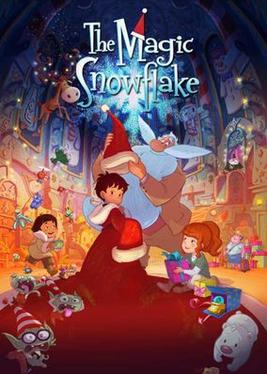Related Research Articles

North American Aerospace Defense Command, known until March 1981 as the North American Air Defense Command, is a combined organization of the United States and Canada department, that provides aerospace warning, air sovereignty, and protection for Canada and the continental United States.

Santa Claus is a town in Spencer County, Indiana, United States, in the southwestern part of the state. The population was 2,586 at the 2020 census. It is home to numerous Christmas themed attractions, including Holiday World & Splashin' Safari and Santa's Candy Castle.

A Canadian postal code is a six-character string that forms part of a postal address in Canada. Like British, Irish and Dutch postcodes, Canada's postal codes are alphanumeric. They are in the format A1A 1A1, where A is a letter and 1 is a digit, with a space separating the third and fourth characters. As of October 2019, there were 876,445 postal codes using Forward Sortation Areas from A0A in Newfoundland to Y1A in Yukon.

Ded Moroz, or Morozko, is a legendary figure similar to Saint Nicholas, Father Christmas, and Santa Claus who has his roots in Slavic mythology. The tradition of Ded Moroz is mostly spread in East Slavic countries and is a significant part of Russian culture. At the beginning of the Soviet era, communist authorities banned Ded Moroz. However, the ban was lifted and he soon became a significant part of Soviet culture. The literal translation of DedMoroz is Old Man Frost, but traditionally the name is translated as Father Frost.
Mail merge consists of combining mail and letters and pre-addressed envelopes or mailing labels for mass mailings from a form letter.

Laura Virginia O'Hanlon Douglas was an American educator best known for writing a letter as a child to the New York newspaper The Sun that inspired the 1897 editorial "Is There a Santa Claus?". The editorial, by Francis Pharcellus Church, contains the line "Yes, Virginia, there is a Santa Claus", and brought attention to O'Hanlon for the rest of her life. Historian Gerald Bowler called it "the most famous editorial in history."

One Magic Christmas is a 1985 Christmas fantasy film directed by Phillip Borsos. It was released by Walt Disney Pictures and stars Mary Steenburgen and Harry Dean Stanton. It was shot in Meaford, Ontario with some scenes in Owen Sound, Ontario, Canada.

The Gazette is a daily newspaper based in Colorado Springs, Colorado, United States. It has operated since 1873.

In Christmas folklore and legends, Santa's Workshop is the workshop where Santa Claus and his elves live and make the toys and presents given out at Christmas. The exact location of Santa's workshop varies depending upon local culture, however it is generally believed to be somewhere around or on the North Pole. There are at least eight claimed locations for his workshop. For example, people in Canada send letters to Santa's Workshop at his North Pole location in Canada, with the unique postal code of "H0H 0H0". People in the United States believe the workshop is a sprawling commune located at the North Pole. Some people in the United Kingdom and Finland believe that Father Christmas' Workshop is located in Finland in Korvatunturi, Lapland. In addition to housing the factory where toys are either manufactured or distributed by the elves, the complex also houses the residence of Santa, his wife, companions, and all of the reindeer.

Fred Claus is a 2007 American Christmas comedy film directed by David Dobkin, screenplay and a story by Dan Fogelman and Jessie Nelson, and starring Vince Vaughn, Paul Giamatti, Miranda Richardson, John Michael Higgins, Elizabeth Banks, Rachel Weisz, Kathy Bates, Trevor Peacock, Ludacris, and Kevin Spacey. The film was first announced in October 2005 with Mike Mitchell attached to direct. The film was released in the United States on November 9, 2007 by Warner Bros. Pictures. It is loosely based on the poem "A legend of Santa and his brother Fred" written by Donald Henkel. It received negative reviews from critics and grossed $97 million worldwide against the production budget of $100 million.

Santa Claus Village is an amusement park in Rovaniemi in the Lapland region of Finland. It was opened in 1985.

NORAD Tracks Santa is an annual Christmas-themed program in which North American Aerospace Defense Command (NORAD) simulates the tracking of Santa Claus, who is said to leave the North Pole to travel around the world on his mission to deliver presents to children every year on Christmas Eve. The program starts on December 1, but the actual Santa-tracking simulation starts at midnight annually on December 24. It is a community outreach function of NORAD, and has been held annually since 1955.

Santa Claus is a legendary figure originating in Western Christian culture who is said to bring gifts during the late evening and overnight hours on Christmas Eve. He is said to accomplish this with the aid of Christmas elves, who make the toys in his workshop, and with the aid of flying reindeer who pull his sleigh through the air.
A Muppets Christmas: Letters to Santa is a 2008 NBC television special directed by Kirk R. Thatcher featuring The Muppets in a Christmas mission to personally deliver three letters to Santa Claus, accidentally diverted by Gonzo, to the North Pole. The special, shot in Brooklyn and Midtown Manhattan, was released by Walt Disney Studios Home Entertainment on DVD.
Operation Santa Claus is a yearly initiative undertaken by the United States Postal Service. It was started in 1912 when United States Postmaster General Frank Hitchcock authorized local postmasters to start responding to needy children, with the first one starting at the James Farley Post Office.

Santa Claus' Main Post Office is a tourist destination in Santa Claus Village in the Arctic Circle, about 8 km (5.0 mi) north of Rovaniemi. It is the only official Santa Claus´ Post Office and part of the Finnish postal services. It is open all year and over 100 international media and about half a million visitors from around the world are welcomed by Christmas-dressed postal elves. Santa Claus’ Main Post Office has received over 15 million letters from 198 countries since 1985. In 2014 Santa Claus received most letters from China, Italy and Poland. In Santa Claus' Main Post Office visitors can also read letters sent to Santa. A letter writer can arrange to have a letter mailed to them from Santa before Christmas.
Google Santa Tracker is an annual Christmas-themed entertainment website first launched in 2004 by Google that simulates the tracking of the legendary character Santa Claus on Christmas Eve, using predetermined location information. It also allows users to play, watch, and learn through various Christmas-themed activities. The service was inspired by NORAD Tracks Santa, which has operated since 1955.

The Magic Snowflake is a 2013 animated Christmas adventure comedy film made by Gaumont Animation. This full-length animated feature film was co-produced with Snipple Animation and Dapaco Productions. This is a sequel to the 2010 animated film Santa's Apprentice.

Santa Claus and the Magic Drum is a 51 minute long Finnish-Hungarian animation released in 1996. The story is based on a 1995 children's book of the same name by Mauri Kunnas. The film has been recorded in Finnish, English (British) and Swedish. It was made for TV broadcasting and was first shown on Christmas Eve 1996, and has been broadcast on YLE TV2 nearly every Christmas Eve since. Santa Claus and the Magic Drum has been sold to over 40 countries.

The Legend of Holly Claus is a best-selling children's fantasy novel by American author Brittney Ryan published in 2004. It was originally part of the Julie Andrews Collection.
References
- ↑ Newsweek Staff (November 28, 2004). "How do you E-Mail the Big Man?". Newsweek.
- ↑ Brownell, Matt (22 December 2011). "The Best Ways to Get a Hold of Santa". TheStreet.
- 1 2 Biederman, Marcia (November 20, 2003). "Who's That Man At the Keyboard?". New York Times.
- 1 2 Scott, Bonnie (December 6, 1998). "Media Mom: Kids can visit Santa". Knight Ridder News Service. United States.
- 1 2 "This is how my kids email Santa and get a reply. And it's free". Mamamia. December 8, 2017.
- 1 2 "PersonPlaceThing-EmailSanta.com". The Globe and Mail. Toronto. December 24, 2004. p. L3. ProQuest 1368502444.
- 1 2 3 Ribeiro, Ricky. "EmailSanta.com: How Santa Claus Went Digital". BizTech Magazine.
But much has changed for Kerr since he first set up his site. It now offers kids and parents personalized messages from Santa, which run from an ASP script that Kerr built himself.
- ↑ Depalma, Anthony (November 26, 1997). "Weeklong Postal Workers' Strike Snarls Deliveries in Canada". New York Times.
- ↑ Braid, Don (December 8, 1998). "Internet Santa rekindles magic". The Calgary Sun. p. 4.
- ↑ "Meet the People Who Respond to Emails to Santa Claus". www.vice.com. 23 December 2015. Retrieved 2020-08-19.
- ↑ Baird, Kirk (December 13, 2004). "He's Got Mail: Kids find that e-mailing Santa is more fun than using snail mail". Las Vegas Sun.
- ↑ Braid, Don (December 20, 1999). "Kids heat up the Internet to feel Santa's magic". The Calgary Sun.
- ↑ Anderson, Lucia (December 16, 2003). "St. Nick busy with e-mails to kids". The Free Lance-Star. Fredericksburg, Virginia. Retrieved August 22, 2020.
- ↑ Rueb, Emily S. (December 21, 2019). "Trying to Reach the North Pole? Check Your Wi-Fi". New York Times.
- ↑ Wright, Tony (2021-12-08). "Is Google Trying To Erase Santa? The Curious Case Of EmailSanta.com". Search Engine Journal. Retrieved 2022-12-26.
- 1 2 Tufnell, Nicholas. "Don't email Santa, it's disappointing". Wired. ISSN 1059-1028 . Retrieved 2024-04-26.
- ↑ "Calgary Santa receives wishes and cries for help in emails from around the world". Calgary Herald. Retrieved 2020-08-20.
- ↑ Gulevich, Tanya. "Children's Letters". Encyclopedia of Christmas & New Year's Celebrations (2nd ed.). Detroit: Omnigraphics. p. 109.
- ↑ Harding, Margaret (December 23, 2009). "Letters to Santa dwindle, but kids still have Christmas spirit". TribLIVE.
- ↑ McUsic, Teresa (December 17, 2004). "How the Web saved Christmas". Star-Telegram. Fort Worth, Texas.